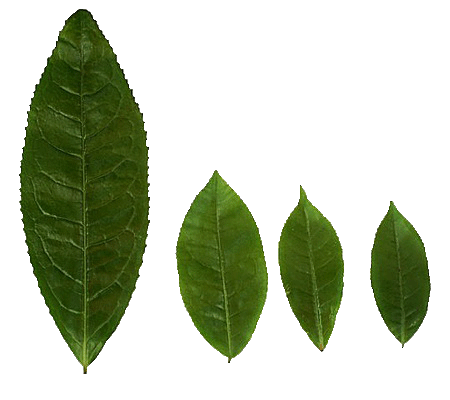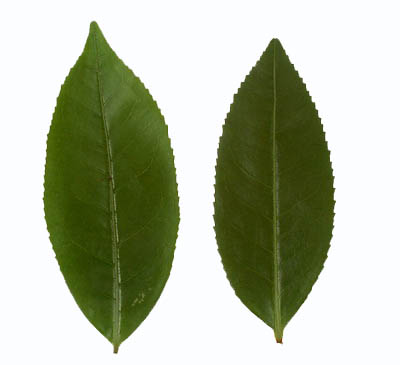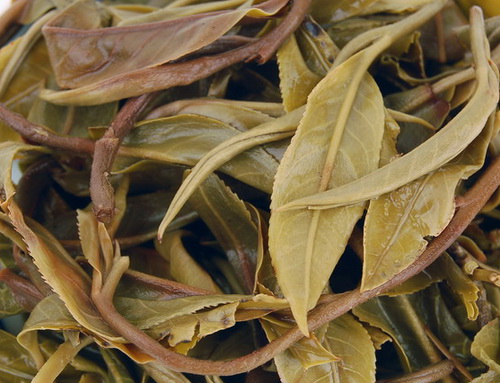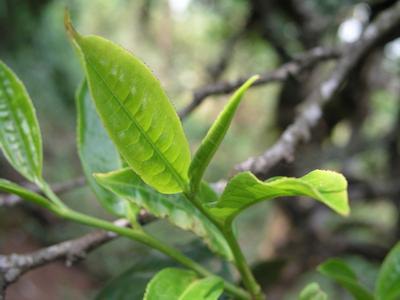Puer or Pu ‘erh tea should be made from camelia sinensis assamica. But the leaves could come from any kind of sinensis assamica plant; wild trees, ancient arboreal trees, old trees, bushes.
These leaves (below/left) are all da ye zhong (camelia sinensis assamica) old tea tree leaves. The leaf on the far left is clearly older, but still new growth. This gives an idea of the variation in leaf size. The first leaves of spring (tou chun) are typically smaller than the leaves shown here.

The leaf on the left (below) is from an old tea tree, on the right from a da ye tea bush – tai di. Note the more regular formation and serrations on the upper margins of the tea bush leaf. Different areas also have trees that produce leaves with different structural peculiarities.

Clearly size alone is not a reliable indicator – big leaves are not necessarily from big trees.

There is a little bruising on a couple of these leaves. It’s not ideal, but is fairly common in some areas where the tea gardens are some distance from where the tea is processed, and on the way the leaves have been affected.
Spent old tree tea leaves of young tea – when they have not been pressed into cakes – should look something like this.
These particular leaves were about 6-7 cm long. Note the thickness of the petioles and the raised midrib on the lamina.

